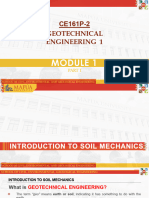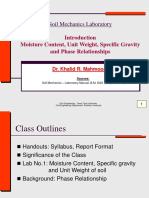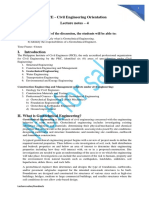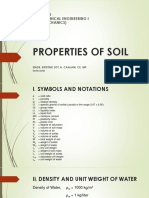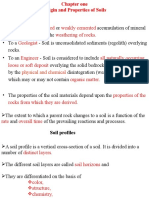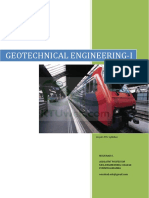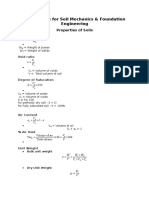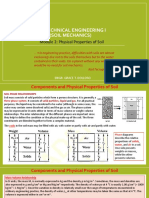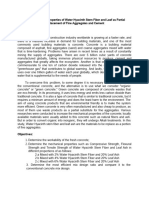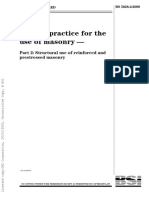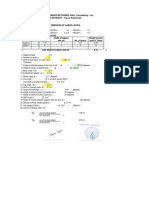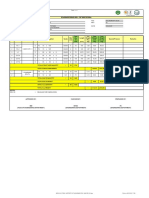0% found this document useful (0 votes)
61 views36 pagesLecture 1 - Introduction
Gs = s / w = s / w
(2) Void ratio e and porosity n:
e = n / (1-n)
n = e / (1+e)
Proof:
Vv/Vs = e
Vv/Vt = n
Vv = Vt * n = Vs * e
n = e * Vs/Vt = e/(1+e)
Uploaded by
Ki KiethCopyright
© © All Rights Reserved
We take content rights seriously. If you suspect this is your content, claim it here.
Available Formats
Download as PDF, TXT or read online on Scribd
0% found this document useful (0 votes)
61 views36 pagesLecture 1 - Introduction
Gs = s / w = s / w
(2) Void ratio e and porosity n:
e = n / (1-n)
n = e / (1+e)
Proof:
Vv/Vs = e
Vv/Vt = n
Vv = Vt * n = Vs * e
n = e * Vs/Vt = e/(1+e)
Uploaded by
Ki KiethCopyright
© © All Rights Reserved
We take content rights seriously. If you suspect this is your content, claim it here.
Available Formats
Download as PDF, TXT or read online on Scribd
/ 36









